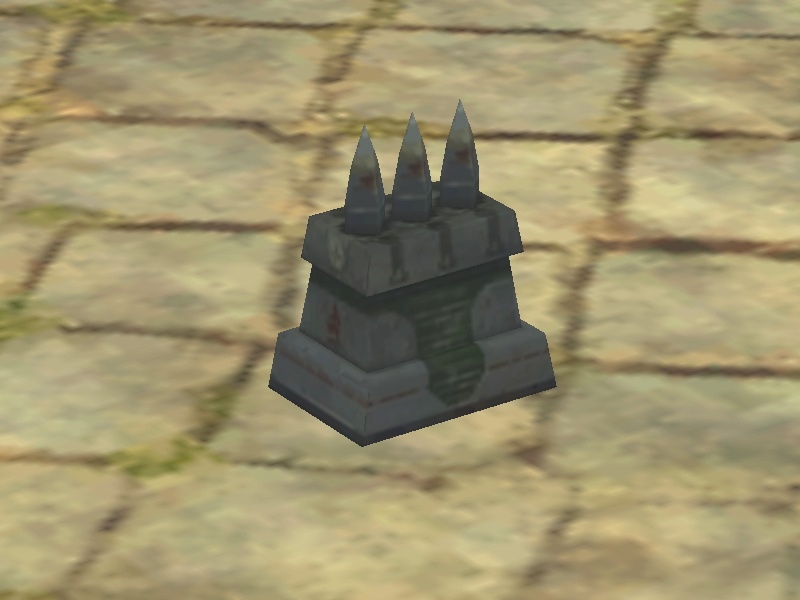Bombshell Genius

A case of three Tabder-A radiation missiles
OUT OF CHARACTER INFORMATION
- Intent: To provide a new generation of radiation missiles
- Image Source: Jedi Knight II: Jedi Outcast
- Canon Link: N/A
- Primary Source: 3t4 man-portable missile (A variant), Porkins heavy concussion missile (C variant), Radiation launcher
- Manufacturer: Ringovinda Systems
- Model: Tabder radiation missile
- Affiliation: Open-Market
- Modularity: Yes: three models (see below) variable in size, range and yield - can also replace the warheads by ion, penetrator or regular HE charges
- Production: Mass-Produced
- Material: Detonite, standard electronic components, plasteel casing, standard rocket components, radioactive payload
- Classification: Missile
- Size: Average (A variant), Large (B variant), Very Large (C variant)
- Weight: Average (A variant), Heavy (B variant), Very Heavy (C variant)
- Ammunition Type: Missile
- Ammunition Capacity: One
Reload Speed: None
- Effective Range: Long Range (A and B variants), Battlefield (C variant)
- Rate of Fire: Average (A and B variants), Low (C variant)
- Stopping Power: High (A and B variants), Very High (C variant)
- Recoil: None
- Radiation payload
- Comes in three models, denoted A, B and C, for man-portable, vehicle/fighter mount or bomber mount respectively
- Delayed homing
- Great tracking
- High blast radius: the A variant has a blast radius of 25m, the B variant having a blast radius of 50m, and the C variant having a blast radius of 100m, with maximum destruction achieved within 10m, 20m and 30m of the blast point respectively
- Very effective in area denial due to its radioactive payload
- Pressure detonation: should any Force-user or tractor beam attempt to divert its course, while in flight, it will detonate
- Long range
- Pressure detonation: a stray blaster shot, or stray shrapnel, that hits a Tabder will cause it to detonate - it will also make a strong wind, turbulent weather, strong engine wash, a tractor beam or other similar mechanism capable of veering it off course trigger a detonation
- Its effectiveness decreases significantly when the target's speed rating gets better than average starfighter-scale ships, rendering it much less effective against fighters (when contrasted against bombers or gunships)
- Against aircraft, its effective range is highly dependent on its angle of attack: firing a Tabder in a stern chase or even for flanking will result in a much lower wffective range than attacking aircraft head-on
- Can be fooled by flares
- Delayed homing may easily be back-trackedà
- Long radioactive half-life (4-6 weeks)
Initially codenamed the 3t7, the Tabder was given its name when a manufacturer of radiation launchers was expropriated by the local authorities on Tarhassan due to a case of criminal neglect, and later auctioned off. Ringo thus won the manufacturer in question on the auction block. Reusing much of the same technology as the 3t4 missile, in fact, its electronics and casing were mostly identical to the 3t4 and 3t5, the primary difference between a 3t4 and a Tabder is its payload: whereas the 3t4 was mostly detonite, the Tabder also contained a radioactive component to its payload, rendering it useful for area denial. It still features the same tracking system that also features delayed homing, allowing its operator to have the missile start tracking the target only a certain time after launch. As such, it also comprises the same weaknesses, that is, the pressure detonation mechanism is very sensitive. So sensitive in fact that a strong wind, engine wash or a tractor beam would cause it to detonate. Finally, the radioactive half-life of the isotopes used in the payload have a half-life between 4 and 6 weeks.
Important notes:
- The B variant counts for 1 concussion missile for fighter or vehicle use
- The C variant counts for 1 proton rocket for fighter or vehicle use







